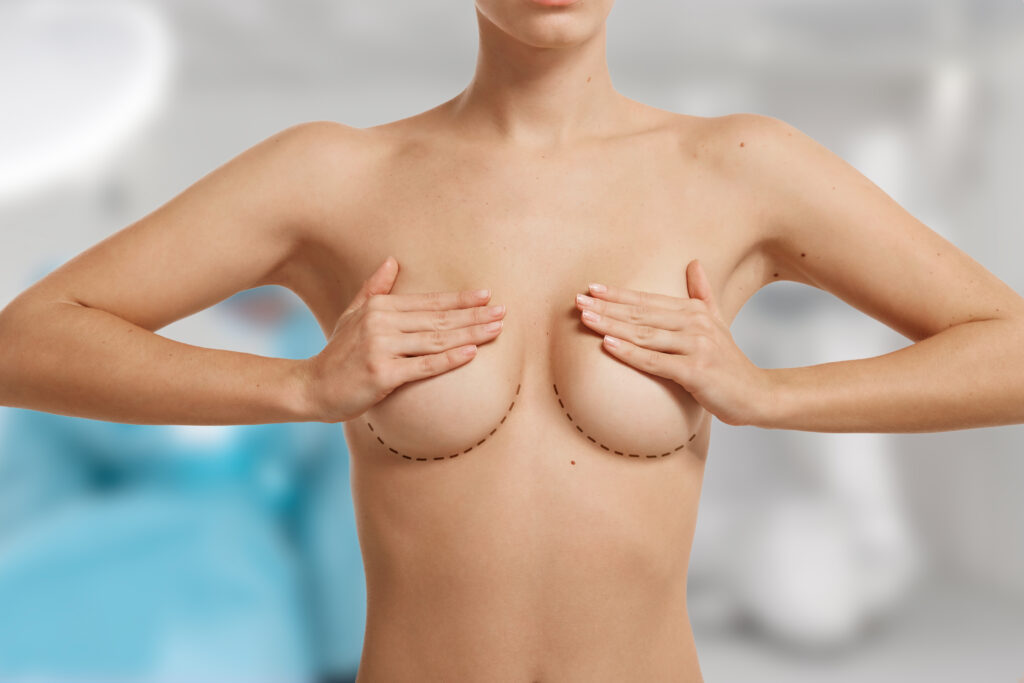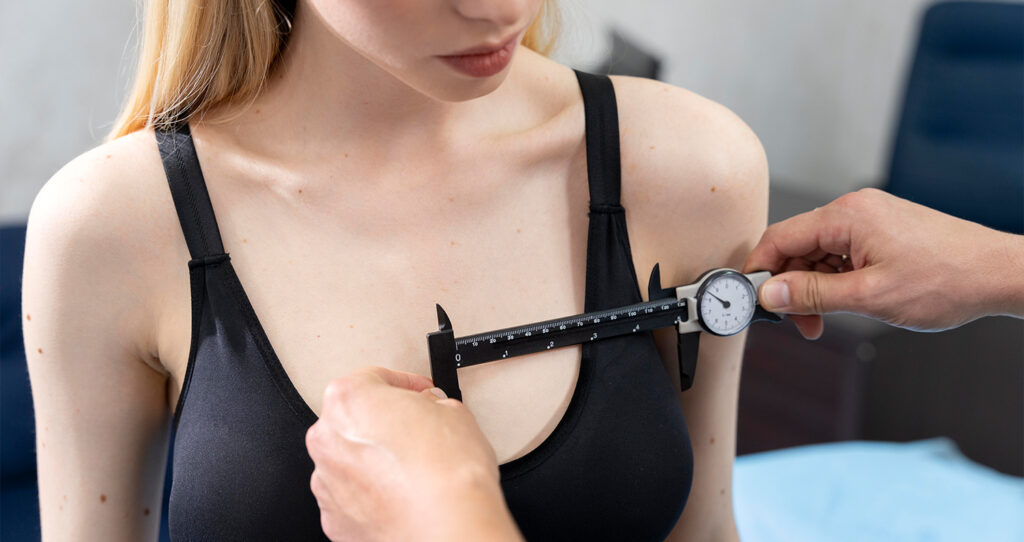Are you considering upper blepharoplasty, the cosmetic procedure designed to rejuvenate and enhance your upper eyelids? This comprehensive resource covers all aspects of this transformative surgery.
Together with doctor A. Avila, we’ll answer your most pressing questions about upper blepharoplasty, taking you through the entire process. From the initial preparation to the step-by-step procedure, postoperative care tips, and the results you can expect, we’ve got it all covered.
What is Upper Blepharoplasty?
Upper blepharoplasty is a cosmetic surgical skin removing/ tightening surgery in the upper eyelid area.
It is typically performed to address issues like excess, sagging or drooping upper eyelid skin, excess fatty deposits, and puffiness in this region. While its primary goal is cosmetic enhancement, this surgery can also offer functional benefits by improving the field of vision in individuals with sagging upper eyelids [1, 2].
Dr. Avila, an aesthetic surgeon, emphasizes the distinction between medical and aesthetic purposes:
- In the early 20s, some seek the procedure for aesthetic reasons, like appearing less tired due to genetics or change their eye shape.
- Early 30s patients often desire an aesthetic change, such as more open eyes, but like in the early 20s, there’s typically minimal excess skin.
- From the 40s onward, excess skin becomes more evident and can even lead to medical issues, impacting vision. This can be a valid medical reason for undergoing upper blepharoplasty.
Differences Between Lower and Upper Eyelid Surgery
Lower and upper blepharoplasty are distinct procedures with significant differences in their complexity, outcomes, and patient experiences.
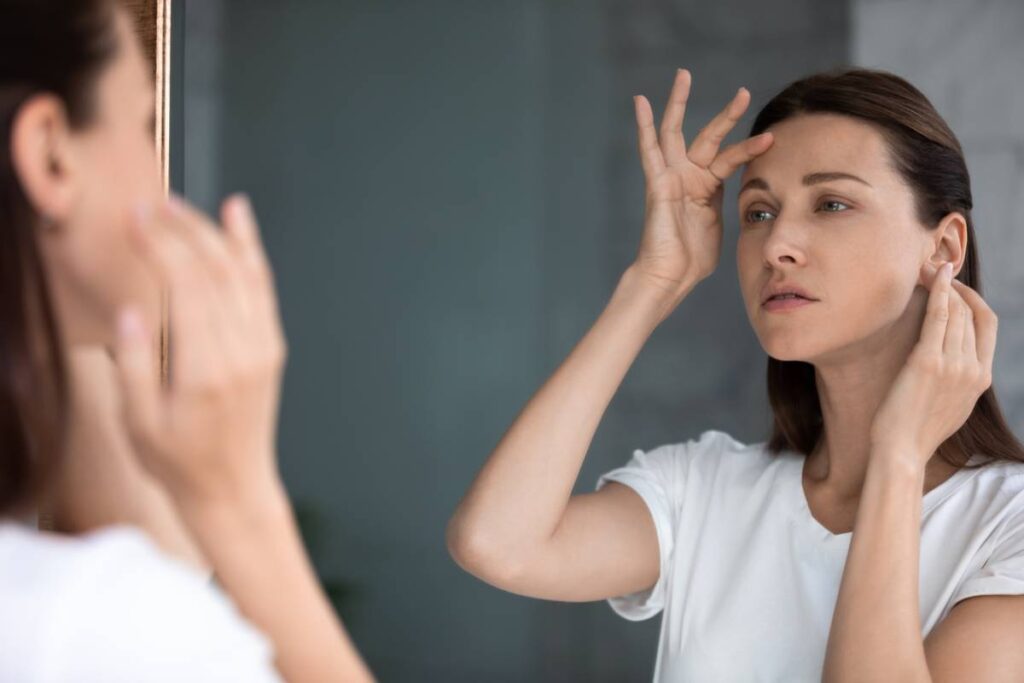
While both surgeries aim to enhance the appearance of the eyes, they involve different approaches and considerations [3].
| Upper blepharoplasty | Lower blepharoplasty | |
| Procedure | The main focus is on excess skin removal. In some cases, a portion of the underlying muscle or fat pads might also be removed or adjusted, but this is less common. | Often involves an incision inside the lower eyelid mucosa, referred to as the transconjunctival approach. This reduces the risk of external scarring but demands greater precision. |
| Complexity | Relatively straightforward and is often considered one of the less complex facial procedures. | Considerably more complex and demanding than its upper counterpart. Surgeons need extensive experience and skill to achieve optimal results. |
| Anesthesia | It can be performed under local anesthesia, making it less invasive and generally leading to a shorter recovery time. | Like upper blepharoplasty, it is usually performed under local anesthesia combined with sedationSedation is a medical technique used to induce a state of relaxation, calmness, and sometimes drowsiness in a patient. It is often used to reduce anxiety, discomfort, and pain during the procedure while allowing the patient to remain conscious and responsive.. |
| Duration | Typically takes around 45 minutes to an hour. | In most cases, can be completed within 1 to 2 hours. |
| Recovery | Patients usually experience minimal swelling, and complications are rare. | Recovery can be more challenging. Patients may experience a more extended period of swelling, and it might take time for the results to become evident. |
📌 The verdict:
Upper and lower eyelid surgeries differ significantly in complexity, recovery, and patient experience.
While upper blepharoplasty is often straightforward and minimally invasive, the lower counterpart requires greater surgical expertise and comes with a more extended recovery period.
Upper Blepharoplasty Procedure Steps
If you’re considering an upper blepharoplasty, it’s crucial to understand the steps involved in the procedure and what to expect.

Preoperative Preparation
Preparing for blepharoplasty, like any surgical procedure, involves several important steps to ensure a successful outcome and minimize potential risks. Together with Dr. Avila, we’ll provide valuable insights into the preoperative period for this procedure:
- Smoking cessation
It is crucial to quit smoking well in advance of the surgery, ideally four to six weeks before. Smoking increases the risk of wound healing problems and infections.
📌 Staying smoke-free after the procedure is equally essential.
- Medication review
If you are taking blood-thinning medications, consult your general practitioner to discuss whether it’s advisable to temporarily discontinue these medications in the days leading up to the operation.
Also, for patients aged 30 and older, blood work is typically recommended to assess their health. Those aged 40 and above may require an ECGECG stands for electrocardiogram, a medical test that measures the activity of the heart over a specific period. to evaluate their heart rate.
- Dietary considerations
Maintaining a healthy diet is recommended. For example, ensuring an adequate intake of protein can aid in the wound-healing process.
📌 While some sources suggest drinking pineapple juice to prevent post-surgery swelling, Dr. Avila cautions against overdoing vitamins and fruit juices, which can potentially increase the risk of bleeding during surgery.
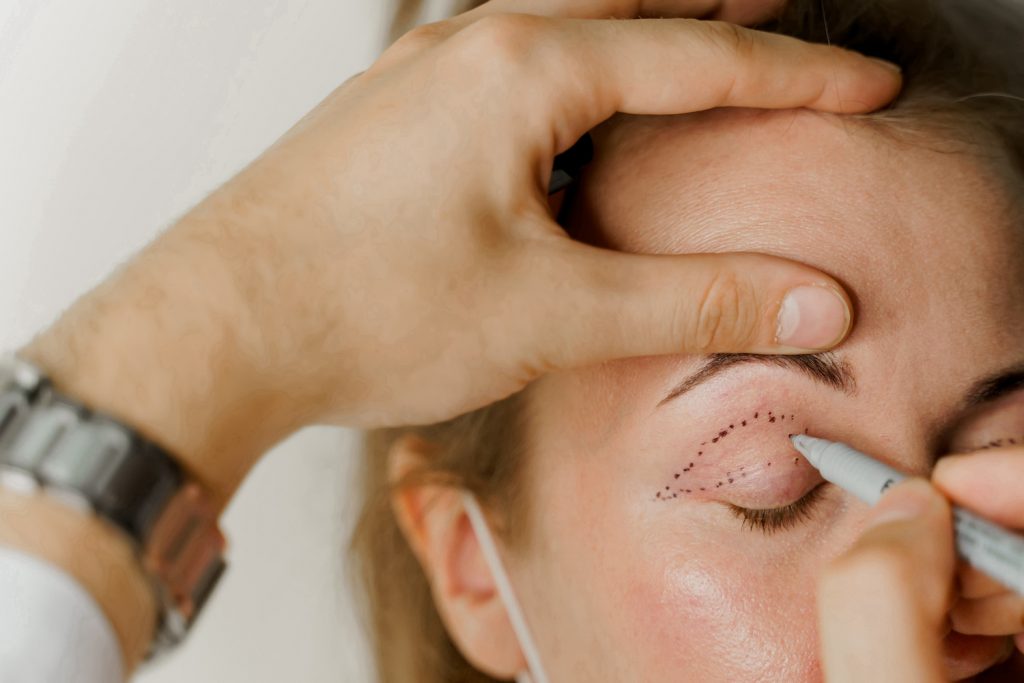
Surgical Technique
This surgical technique can be tailored to meet individual needs, ranging from a light version focused on skin reduction to more advanced approaches involving muscle and fat pad adjustments. Let’s explore the intricacies of the operation.
- Marking the resection area
The surgeon begins by carefully marking the area of excess skin on the upper eyelid. This delineated area guides the subsequent steps.
- Local anesthesia
Local anesthesia mixed with epinephrine is administered below the marked area to ensure the patient’s comfort throughout the procedure.
- Hydrodissection
A crucial step in this technique involves hydrodissection, creating a water cushion between the soft tissues beneath the excess skin and the skin itself. This separation ensures that the eye is protected during the procedure.
- Skin resection
Using a precise surgical knife, the surgeon gently removes the marked excess skin. This step requires meticulous care to avoid any damage to the eye.
Also, with this advanced technique, you can remove not only excess skin and muscle but also fat pads behind the eyelids. This step contributes to a more refined and slimmer appearance.
- Suturing
Finally, the surgeon sutures the skin together. The outcome is more expressive eyes and a refreshed appearance.
Postoperative Period
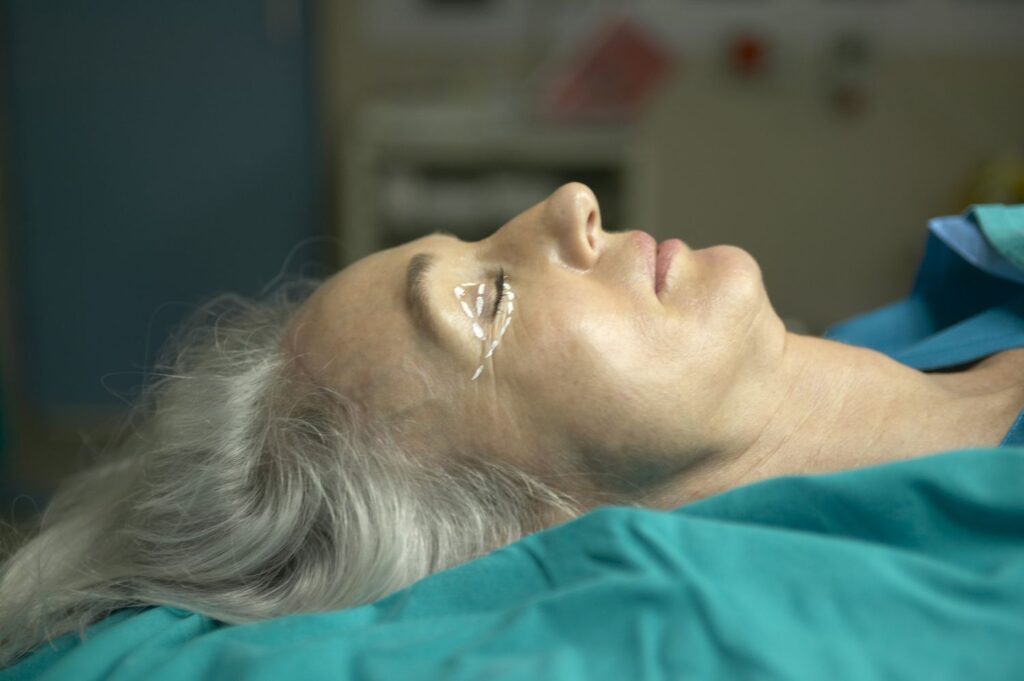
Some key points to consider during the postoperative period:
- Actions after surgery
After the surgery, patients are typically monitored in a recovery area for a short period.
📌 It’s essential to have someone to drive you home as you might still be under the influence of sedation.
- Swelling and bruising
Swelling and bruising around the eyes are common after upper blepharoplasty. This can be managed with cold compresses and by keeping the head elevated while resting.
This swelling usually peaks within 48 hours and starts to gradually improve over the next few weeks.
- Scarring
Incisions are typically made in the natural creases of the upper eyelid to minimize visible scarring. However, it’s essential to follow proper care instructions provided by your surgeon to aid in scar healing and reduction.
Also, follow your surgeon’s aftercare instructions diligently to promote a smooth and successful recovery.
“The sense of not feeling operated anymore might take around three months. During this time, there may still be some residual swelling and minor hematoma, but these will gradually resolve over the course of approximately eight weeks.”
— Dr. Avila
Before and After Results
Wondering about the real-life impact of an upper blepharoplasty? Before and after photos are valuable in demonstrating the effects of this procedure. So, let’s explore them.




Aftercare Instructions
After undergoing upper blepharoplasty, following a proper postoperative care routine is essential for a smooth and successful recovery.
- Sleeping position
During the first week after surgery, it’s crucial to sleep only on your back with your upper body elevated. This position helps reduce swelling and discomfort. Imagine sleeping in a “beach chair” position.
- Cooling
Throughout the day, practice a cooling routine. Apply cold compresses or cooling masks to the treated area for 20 minutes, followed by a 20-minute break. This cycle should continue in the morning and at bedtime.
- Sleeping mask
Dr. Avila recommends using a sleeping mask during this period to prevent accidental rubbing or touching of the treated area. This helps protect the surgical site, especially in the morning when waking up.
- Makeup
Makeup application can typically resume after one week. However, be cautious when removing makeup, as excessive force or rubbing can be harmful to the healing incision site. Use gentle makeup removal techniques.
- Sauna and tanning beds
The use of saunas and tanning beds should be avoided for at least four weeks after the surgery to minimize the risk of complications.
- Resuming physical activity
Patients can gradually reintroduce their regular exercise routines after one month of recovery. It’s essential to consult with your surgeon before resuming any vigorous physical activities to ensure it’s safe to do so.
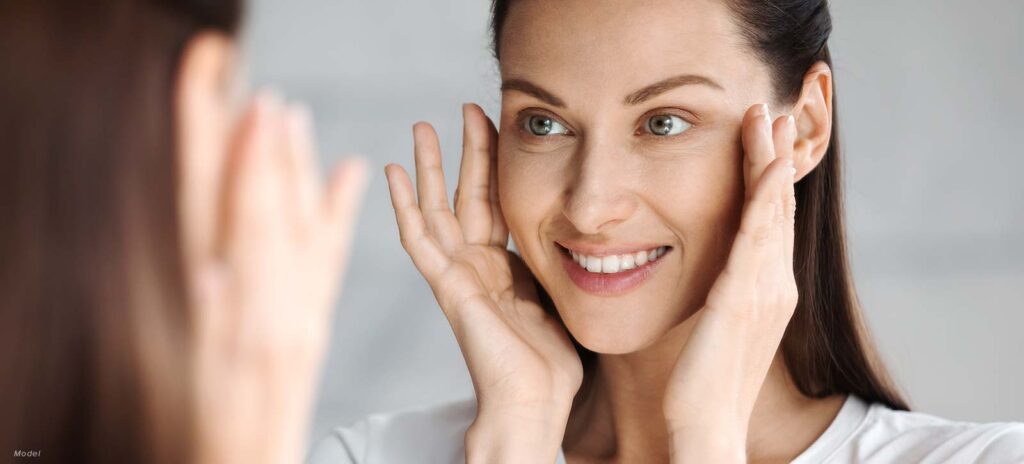
Risks and Complications Associated with Upper Blepharoplasty
While upper blepharoplasty is a commonly performed cosmetic procedure that offers significant aesthetic benefits, it’s essential to be informed about the potential risks and complications that can arise.
- Scarring
The incisions made during the surgery are typically well-hidden in the natural eyelid creases to minimize visible scarring. However, individual healing processes vary, and some patients may develop more noticeable marks. If so, patients can consider scar management techniques such as silicone gel sheets, topical creams, or even laser treatments.
- Nerve damage
The upper eyelid is rich in nerves responsible for sensory functions, for example, eyelash sensation. During surgery, unintentional damage to these nerves can occur, leading to temporary loss of sensation. In most cases, it returns gradually over time.
- Bleeding or hematoma
Any surgical procedure carries the risk of bleeding or hematoma, which is the collection of blood under the skin. Small hematomas can result in bruising and swelling, while larger ones can lead to complications.
📌 Large hematomas may require emergency treatment, including surgical intervention to remove the accumulated blood and prevent infection.
Patients should follow post-operative instructions carefully to minimize such risks.
- Eye damage
While the risk of damaging the eyeball itself during upper blepharoplasty is extremely low, precautions are taken to prevent such an occurrence. Surgeons may use techniques like injecting water beneath (what we’ve described above) the skin to create a cushion and minimize the risk of accidental eye injury or eyeball shields where needed.
- Excessive skin removal
A specific complication of upper blepharoplasty is the possibility of removing too much skin. Over-resection can lead to difficulties in closing the eyes properly, resulting in chronic dryness, discomfort, and pain. Because of this surgeons should carefully assess the amount of skin to be removed, aiming for a natural and functional outcome.
📌 However, statistics regarding the risks associated with upper blepharoplasty are low, and patients should generally not be overly concerned.
The overall complication rate for upper blepharoplasty is 7.9%. The most common side effects were swelling, bruising, and dryness. Serious complications, such as infection, bleeding, vision changes, and excessive skin removal were not observed or occurred very rarely [4].
Choosing a board-certified and experienced plastic surgeon, following pre- and post-operative instructions diligently, as well as maintaining realistic expectations can further minimize the risks.
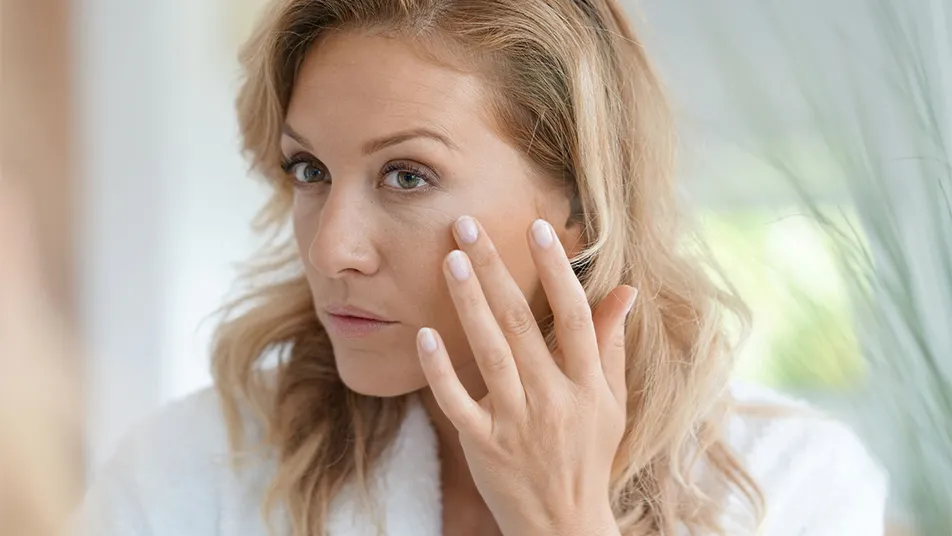
The Verdict
If you’re tired of looking fatigued or older due to concerns with your upper eyelids, considering an upper blepharoplasty procedure can be a game-changer. This surgical intervention is meticulously designed to address issues related to the upper eyelids, ultimately refreshing your appearance and bestowing a more youthful and vibrant look.
Thanks to Dr. Avila’s expert insights and guidance throughout this comprehensive article, you now have a deeper understanding of upper blepharoplasty. From preparation to the procedure itself, postoperative care tips, and the expected results, you can make well-informed decisions about this procedure.
FAQ
🙋🏻♀️ What is the best age to consider upper blepharoplasty?
While the procedure is often associated with aging, it can be considered at different stages of life. Some patients in their early 20s seek this surgery for aesthetic reasons, while others in their 40s or older may opt for it for both cosmetic and functional reasons.
⏳ How long is the recovery period after upper blepharoplasty?
The initial recovery phase typically lasts about one to two weeks, during which you may experience some swelling and bruising. Full recovery, where you no longer feel operated, can take three to four months.
🩹 Will there be visible scars after upper blepharoplasty?
In most cases, the scars are hidden within the natural creases of the upper eyelid and become less noticeable with time.
🔍 Are the results of upper blepharoplasty permanent?
The results of upper blepharoplasty are long-lasting, and in many cases, they can be considered permanent. However, the aging process continues, so subtle changes may occur over time.
References
- Patel BC, Malhotra R. Upper Eyelid Blepharoplasty. 2023 Jul 24. In: StatPearls [Internet]. Treasure Island (FL): StatPearls Publishing; 2023 Jan–. PMID: 30725763.
- Hollander MHJ, Contini M, Pott JW, Vissink A, Schepers RH, Jansma J. Functional outcomes of upper eyelid blepharoplasty: A systematic review. J Plast Reconstr Aesthet Surg. 2019 Feb;72(2):294-309. doi: 10.1016/j.bjps.2018.11.010. Epub 2018 Nov 22. PMID: 30528286.
- Kossler AL, Peng GL, Yoo DB, Azizzadeh B, Massry GG. Current Trends in Upper and Lower Eyelid Blepharoplasty Among American Society of Ophthalmic Plastic and Reconstructive Surgery Members. Ophthalmic Plast Reconstr Surg. 2018 Jan/Feb;34(1):37-42. doi: 10.1097/IOP.0000000000000849. PMID: 28151825.
- Yang F, Ji Z, Peng L, Fu T, Liu K, Dou W, Li J, Li Y, Long Y, Zhang W. Efficacy, safety and complications of autologous fat grafting to the eyelids and periorbital area: A systematic review and meta-analysis. PLoS One. 2021 Apr 1;16(4):e0248505. doi: 10.1371/journal.pone.0248505. PMID: 33793573; PMCID: PMC8016360.



